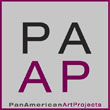« Features
Glossing over Thoughts on Glitch. A Poetry of Error
In the past ten years a proliferation of visual work that embraces the style of digital error has crept into mainstream advertising and popular culture. Recent and ongoing events such as GLI.TC/H in Chicago and Bent Festival in New York City have helped to establish an international dialogue for artists working in this digital underground. As more institutions begin to recognize glitch as an art form, and more people begin to theorize its relevance, we must ask where the genre is heading and where it has been.
By Jeff Donaldson
AN UNANTICIPATED ART
In our modern, networked world, the glitch is everywhere. A dropped phone call, a dropped frame during a televised broadcast, and the Windows operating system’s “Blue Screen of Death” are all examples anyone working with technology has experienced as our tools of communication and entertainment have progressed into the digital realm. As a result of this paradigm shift, the errors of our instruments have taken on a new character; analog static has been replaced with digital precision. We have accepted this new imperfection into our everyday lives as a byproduct of progress and have welcomed it as the personal computer has steadily replaced what is now old media. Where there were once neon lights there are now display panels wired to present the latest in high definition commercial advertisement. As the natural elements erode electronics, these new displays fragment into colorful, geometric forms, sometimes retaining their original content, sometimes creating entirely new images. A bad electrical contact or an improperly connected cable is enough to elicit novel geometric forms. This broken visual landscape is omnipresent, familiar to anyone living in our urban environments, and to those who are paying attention, a new form of readymade machine art that surrounds us.
Conventionally, a glitch is an error. It is a break from an algorithmic flow. Its unanticipated appearance is simultaneously frustrating and mesmerizing. But a glitch uncovers another ordering principle. It is chance made manifest and a spontaneous reordering of data, like the wave function collapse of quantum theory. In its pure, wild sense, a glitch is the ghost in the machine, the other side of intention, a form that is hidden until it manifests itself of its own accord. It is a true type of machine art and a crude form of artificial intelligence inasmuch that once an algorithm is let go to run free, due to the architecture of digital systems, a break from routine creates an ordering of its own. The pixel grid of the computer display provides the framework and serves as the canvas for this manifested algorithmic hiccup. It’s as if the computer is freed from its normal task and instead displays what it wants, the architecture of electronics giving shape to sudden random image data. Glitch art is the cultivation of these errors, an embracing of machine failure as an aesthetic. Buffer overruns, bad electrical contacts, short circuits, and corrupted random access memory become the raw materials.
There is an intrinsic visual order to glitch imagery that is a result of the pixel-grid used in our digital displays. It gives error form. The fractured aesthetic of asymmetrical repetition, the jagged, broken image becomes the identifying character of the form. It is a spontaneous pseudo-random ordering of pixels, image data, code, and script, the result of the reorganization of existing material. A data collage of rendering errors made visible that is platform specific. Each machine and file format has its own flavor due to its bit depth, codec, or resolution, and each one glitches differently, beautifully.
A VISUAL NOISE
Glitch art is data noise, a digital distortion of form via data corruption. As humans we seem to be fascinated with distortion, and the glitch is the new. Aural distortion seems to have always preceded the visual. Just as snares were attached to drums to produce complex sounds, so were guitar amplifier loudspeakers torn out of an intrinsic desire for aural complexity. Our human ears crave overtones and have led us to create instruments such as the saxophone and the distortion pedal. Multiphonics, overtones, partials-the more complex the harmonic make up, the richer the timbre and the closer we come to approaching noise.
Juan Gris’s 1912 cubist masterpiece, Man in the Cafe, perfectly predicts the digital glitch’s distortion of form just as Anni Albers’ rug designs anticipate 8bit video game system glitches.
Piet Mondrian’s geometric masterpieces predate the cracked display of a read error. Giacomo Balla captured the chaos of four dimensions by combining time and space in a superimposition of the underlying reality our five senses filter out in order for us to navigate and survive. Marcel Duchamp’s ready-mades thematically tie together the reappropriation of an object’s function with the recontexualized bug of a prepared game computer. Though parallels with early 20th century art forms can help place glitch in an art historical context, it is totally dependent on electronic media and would not exist without the myriad of devices that populate our current technocentric world culture. Glitch is now.
The genre, which appeared in the mid 1990s electronic music scene and culminated in releases such as Clicks and Cuts (Mille Plateuax, 2000), can be divided into two distinct categories: those that happen without external intervention (the wild glitch) and those that are induced via various methods. Iman Moradi, who along with Ant Scott AKA Beflix released Glitch: Designing Imperfection (Mark Batty Publishers, 2009), coined the term “glitchalike” in his 2004 Glitch Aesthetics essay where he uses the term to differentiate the unprovoked from the provoked glitch.

Ant Scott, GLITCH #11, 2001, screengrab of video in Internet Explorer under Windows 98, recoloured 2007. Courtesy of the artist.
With provoked glitches, algorithms become chance as text, as if bad coding has found its reason or its expression. Errant code creates pseudo-random, indeterminate outcomes. The traditional technique of feeding signals into inputs they were not intended for finds new life. Sending an audio signal through video input, for example, is reinterpreted in glitch art as opening image files in word processing applications. JPGs become text, which can then be randomly edited and saved again as images to be displayed through the filter of codecs. The Joint Photographic Experts Group becomes the framework for cut-ups, mash-ups, and remixes.
Rosa Menkman is an excellent example of someone who has created a unique body of work through the creative manipulation of image data with text and hex editors. A Vernacular of File Formats, which Menkman published in 2010, catalogues her various experiments with image compression codec manipulation, and is regarded as a landmark work in the genre.
Provoking glitches is also pushing electronics to their limits, causing hardware to spontaneously create. The artist’s hand no longer dictates the outcome the way it does with conventional fine art. Instead, conditions are created to bring forth something unpredictable, inasmuch as the set parameters are capable of producing. In my own work with prepared video game systems, wiring is added to the hardware to induce chaotic feedback loops. In a similar manner to the prepared piano which John Cage popularized, by modifying the electronics of, for example, a Nintendo Entertainment System, the game computer is transformed and given a new function as an image generator such as the prepared piano’s strings are transformed into atonal percussion instruments.
Similar practices can be traced back to seminal works by Nam June Paik (Magnet TV, 1965), Reed Ghazala (Circuit Bending, 1966), and Yasunao Tone (Solo For Wounded CD, 1985). Paik’s Magnet TV exploited the distorting effect of strong magnets on cathode ray tube television displays. Ghazala’s “circuit bending” utilizes creative short-circuiting of consumer electronics to create new audio instruments. Tone’s Solo For Wounded CD incorporated audio compact disks which were prepared to induce read-errors in playback machines, therefore creating sound compositions composed of skips and clicks. In all of these examples, errors inherent to each medium were exploited to express new forms of visual and aural art.
A PARADIGM FOR THE DIGITAL AGE
What is the attraction to glitch? Or more so, why are glitch artists drawn to creating work in this genre? Is it the humanizing of what is sold to the public as perfection? The computer as perfection, a precision instrument, capable of executing complex mathematical sequences to such a high degree that we have come to accept the notion of virtual reality feasibly recreating real world experience? Does the glitch therefore become the humanizing element, exposing the machine for what it is, a man-made instrument, a tool only one layer removed from pure data represented as image? Is it the poetic element of distorting images to convey meaning?
Perhaps some find in the fragmented aesthetic of glitch imagery a metaphor for what can be considered our fractured, modern socio-spiritual climate. Maybe it is the aleatoric element, the attraction to chance imagery. Then again, the allure could be that of a novel digital age psychedelia.
As the art form moves more and more toward software manipulation (data bending), plug-ins which emulate glitch effects, and standalone applications (Jon Satrom and Ben Syverson’s Satromizer or Rosa Menkman and Johan Larsby’s Monglot), a new formalism may begin to appear. And as we move more and more toward the myth of digital perfection, new errors will manifest themselves. This paradigm in art will exist as long as commercially available and hackable electronics continue to be invented. But even if they were to stop, the amount of discarded technology and abandonware will continue to be discovered by those looking for new tools of expression. New technologies are introduced and the old are discarded in a must-have frenzy of the latest gadget. In that sense it can be seen that as long as there is technological obsolescence, there is the potential for the creation of novel forms of expression.
Jeff Donaldson is an audio-visual artist currently based in Brooklyn, New York. In 2001 while studying music composition at Towson University, he began working with prepared video game systems and was a member of Baltimore band Wzt Hearts (2004–2008). He is a pioneer in the field of glitch aesthetics. His work has been exhibited worldwide and has been included in Glitch: Designing Imperfection, Mark Batty, 2009.





































